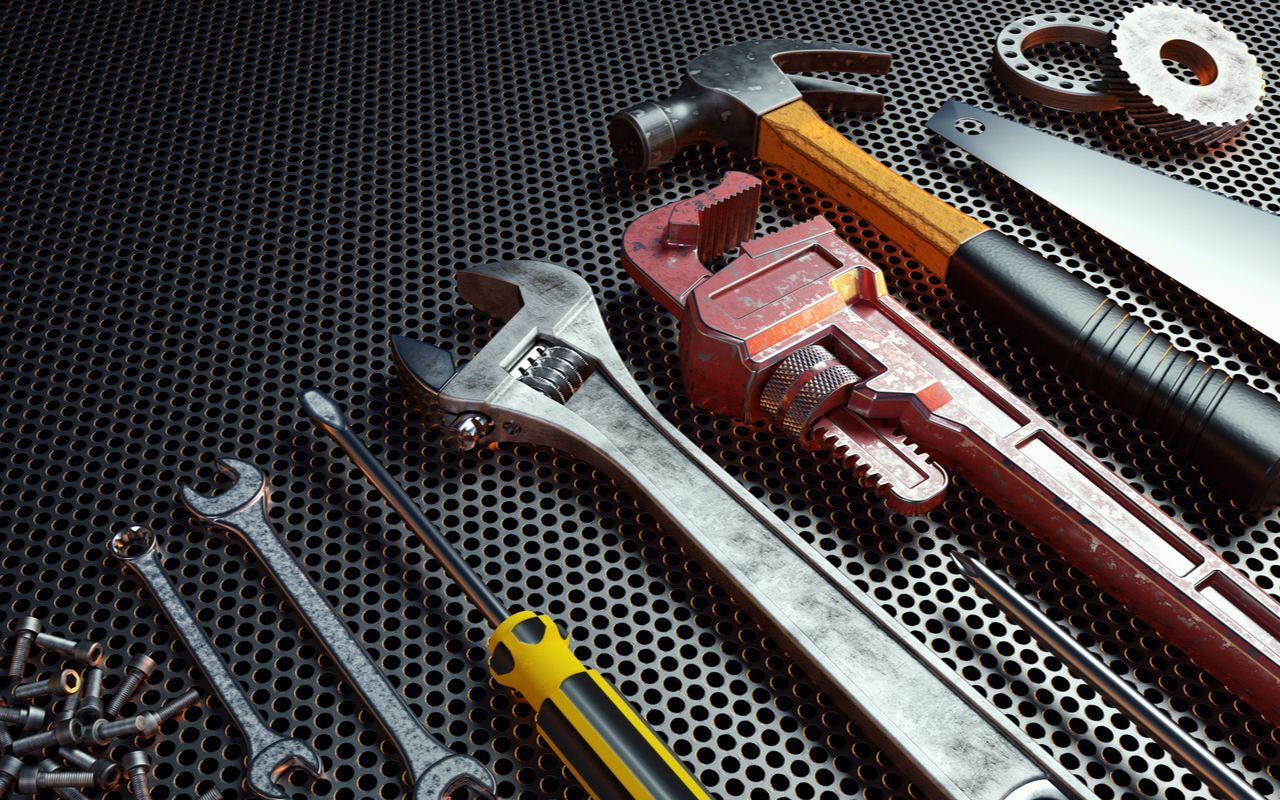While the fundamentals of most power tools are similar, some types are designed for particular applications or power sources, and subsequently come with unique benefits and drawbacks. With so many advancements in tool technology, there is a growing list of considerations project leaders must address when choosing tools—including the preferred (and available) power source.
In general, tool applications range from manual tools to those with designated power sources such as electric, hydraulic and pneumatic tools—so, what’s the difference? Following are the basics of these four types of tools and their recommended applications, highlighting the most significant benefits and drawbacks of each.
Manual Tools
Manual tools are simply those that are operated by hand. Humans have been creating manual tools out of available materials for centuries; to this day, these tools can be remarkably simplistic yet effective.
Manual tools are best for low impact and low torque applications. When it comes to torque tools for nuts and bolts, manual options include the following: adjustable wrenches, shear wrenches, combination wrenches, ratcheting wrenches, manual torque wrenches, breaker bars, swivel ratchets and unconventional ratchets.
The benefits of manual tools are that they:
- Are smaller in size;
- Are easy transport and use;
- Do not require an external power source (other than human force);
- Allow the operator to be in full control;
- Include fewer moving parts;
- Are ideal for low torque projects;
- Have less power, allowing for easier bolt removal if needed; and
- Have high durability with proper maintenance.
The drawbacks of manual tools include that they:
- Are tedious and time consuming for long jobs;
- Deliver less power than air-, hydraulic- and electric-powered tools;
- Are less accurate than electric- and hydraulic-powered tools;
- May require specific operator skillset; and
- Require repetitive motion and force that can result in operator fatigue or injury.
Hydraulic Tools
Hydraulic tools use pressurized liquids such as ethylene glycol, mineral oil, or synthetic fluid to generate and transmit power. Tools such as hydraulic torque wrenches are best known for their high torque capabilities, making them a popular choice for large-scale industrial construction. These tools are used in industries ranging from aerospace to construction.
The benefits of hydraulic tools include that they:
- Have high torque capabilities;
- Are ideal for tightening larger bolts (such as hydraulic torque wrenches);
- Can lift larger and heavier objects (such as hydraulic cranes and jacks);
- Can achieve multiple jobs at once (simultaneous tensioning);
- Are versatile;
- Can be installed quickly; and
- The shock is absorbed by the tool or surface, not the operator.
The drawbacks of hydraulic tools include that they:
- Include large, complex systems with multiple parts;
- Require specialized hydraulic oil;
- May include slip hazards from leaked oil and hydraulic fluid;
- Include heavy parts such as the pump that may be difficult to move;
- Are slower than other options;
- Typically requires more than one operator;
- Have a finite source of media (fluid); and
- The hydraulic lines can pose a tripping hazard.
Pneumatic Tools
Pneumatic tools are powered by compressed air. They must remain attached to a tank of compressed air by a hose equipped with quick-change fittings that enable rapid switching between tools.
When it comes to pneumatic tools, the recipe is simple: The higher the tank volume, the more power will be available to fuel a pneumatic tool’s capability.
The benefits of pneumatic tools include that they:
- Rely on an infinite source of media (air);
- Are available in small sizes;
- Have a fast rundown;
- Are simpler system compared to hydraulics; and
- Have a little chance of fire hazard.
The drawbacks of pneumatic tools include that they:
- Require multiple accessories (such as air compressor tanks, hoses and adaptors);
- Lack portability regarding the compressors and other accessories;
- Lack longevity;
- Have high noise levels;
- Are labor intensive;
- Require the impact and reaction to be absorbed by operator;
- Require regular maintenance;
- Include increased utility costs due to high energy consumption;
- Include hoses that are often rigid;
- Risk air leaks that can cause damage and injury;
- Risk oil leakage;
- Can be negatively impacted regarding tool performance in cold weather, such as frozen lines;
- Include lower tool accuracy than other options;
- Are less powerful and efficient than hydraulics; and
- Include air hoses that can pose a tripping hazard.
Electric Tools
Electric tools can either be powered by batteries or an electrical connection. Electric tools require access to a power source with sufficient voltage and heavy-duty extension cords—or the ability to charge batteries. Provided the jobsite has access to reliable electricity, corded tools can deliver consistent power 24/7. On the other hand, battery-powered tools offer portability since they do not require attachment to their power source. One downside to battery powered tools is that the longer a project takes or the higher the project volume, the less force the tool will be able to deliver (until the battery is recharged).
The benefits of electric tools include that they:
- Are highly accurate;
- Include a moderate speed;
- Include minimal noise levels;
- Are lighter than pneumatic tools;
- Do not require external power source if they are battery operated;
- Are portable;
- Include electrical cords that are more flexible than air or hydraulic fluid hoses;
- Include lower utility costs; and
- Are more durable than most pneumatic and hydraulic options.
The drawbacks of electric tools include that they:
- Include power cords that can pose a tripping hazard;
- Include a risk of shock if used near water;
- Have an uptime limited to battery life (for battery-operated tools only); and
- Deliver lower run down RPMs.
The type of tool best suited to a particular application will vary greatly from project to project. Certain tool types are better suited to certain tasks—if a project involves tightening large bolts or requires a high amount of torque, hydraulic could be a good option. Electric tools are preferred for projects with the need for high accuracy, low clearance and high volume, whereas pneumatic tools are recommended solely for high-volume. For lower-volume tasks that don’t require a great deal of torque or clearance issues, project leaders may wish to stick with manual tools. Regardless of the application, there are ample tool solutions that deliver the right amount of power from project start to finish.






